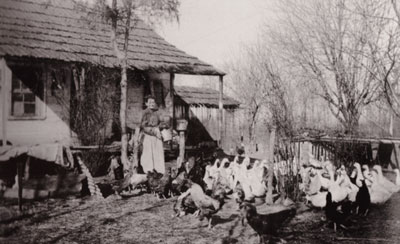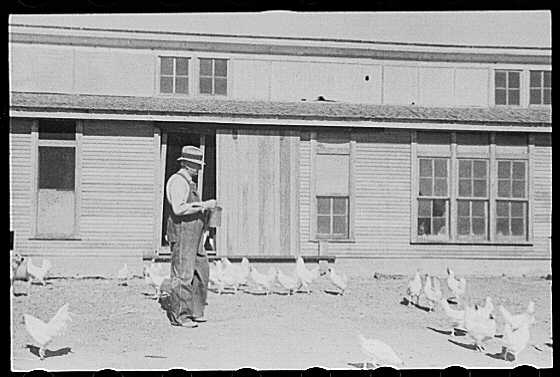|
|
|
Page 12 |
|
"Modernity" and U.S. farm women's poultry operations. Jane Adams,Southern Illinois University
|
|
|
|
 |
|
It was in this context, pushed by their families' financial needs that farms could not reliably provide, and pulled by the desire for consumer goods, that farm women found ways to earn income. Many entered the day labor force, working for their neighbors and/or their husband’s employer, if they were among the increasing number of landless laborers or owners or renters of very small farms. And almost all raised poultry and milked a cow or a few cows, churning the cream into butter. (19) These home flocks and dairies provided for the family’s domestic needs, but they also provided important sources of income. By the second decade of the 20th century, at least, many farm women increased their flocks into almost entirely market-oriented enterprises. This development can be traced in farm advice books (see Perriam 1884, Seymour 1918, Moreland 1943).
This metabolism increased but its structure as an integral part of the domestic economy, although increasingly differentiated and specialized (e.g., specialized hatcheries for chicks, specialization by fryers or eggs), seemed relatively stable and successful for several decades, roughly from 1880, when data on poultry were first collected by the U.S. Census Bureau, through World War II. It seems to have taken a massive, ideologically-driven, effort to translate industrial theories of production to poultry raising in particular, and to farming in general. (20)
Farmers became modern in tandem with the growth in industrialization and non-farm populations through creating dynamic interrelationships between city and country. This relationship entailed an increased rationalization with the attendant differentiation and specialization, enhanced productivity, and sustained cultural engagement of farmers with peoples and institutions located in towns and cities. But it entailed substantially different gender relations and technical organization of production than that envisioned by many urban progressives. These urban business people viewed agriculture as one branch of industry and sought to translate industrial production to farming, bringing with it their (elite) notions of appropriate gender roles. (21) Based on their "high modernist" (Scott 1998) ideology, they attempted to erase the differences between town and country through assimilating agriculture to an industrial design, a program that was largely resisted by farm families. Not until after World War II did this impetus approach realization.
|
|
 |
|
|
|
"Modernity" and U.S. farm women's poultry operations: farm women nourish the industrializing cities 1880-1940. Paper presented at the international conference, The Chicken: Its Biological, Social, Cultural, and Industrial History: From Neolithic Middens to McNuggets. May 17-19, 2002, Yale University, Program in Agrarian Studies. © Jane Adams 2002
Jane Adams' Home Page
|
|
|
|
|
|
|
A tenant on the Walton farm. The Waltons were a member of Union County "society." At least six families lived on the farm at the time this photo was taken, in the early years of the twentieth century. The men, women, and children of these families provided wage labor for the Walton's dairy, small fruit, and orchard enterprises. This woman also raised poultry. The shed in the back is probably a smoke house. For fuller description of this farm, see Jane Adams, The Transformation of Rural Life: Southern Illinois 1890-1990.
Photo in the Walton Collection, Southern Illinois University Morris Library Special Collections.
|
|
|
|
|
|
|
 |
|
|
|
Rehabilitation client feeding chickens. Ottawa County, Kansas. John Vachon, photographer. FSA |
|
|
|
|
|
|
|
|
|
|
|
|
|
|
|
|
|

